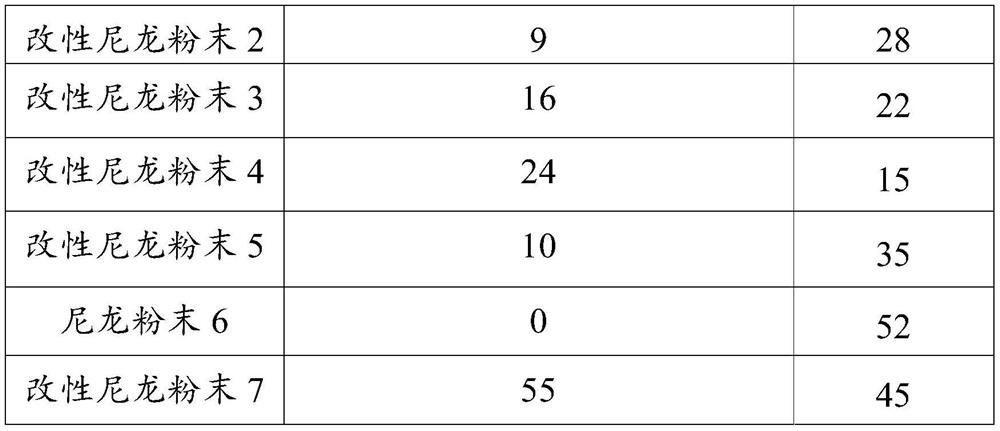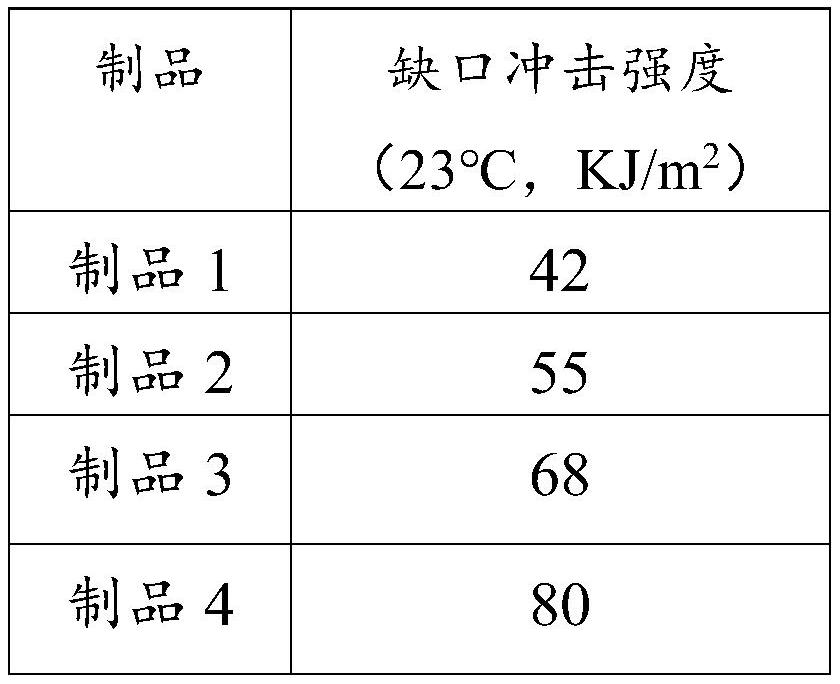Modified nylon powder as well as preparation method and application thereof
A technology of modified nylon and powder, which is applied in the field of 3D printing, can solve the problems of insufficient, three-dimensional component defects, poor toughness, etc., and achieve the effect of broadening application prospects and reducing void ratio
- Summary
- Abstract
- Description
- Claims
- Application Information
AI Technical Summary
Problems solved by technology
Method used
Image
Examples
Embodiment 1
[0057] (1) Add 6kg of core-shell particles CSR-1 and 18kg of deionized water into the autoclave, raise the temperature to 150°C, stir at constant temperature for 10 hours, and separate the solid and liquid by high-pressure flash evaporation. After drying, surface carboxylated core-shell particles are obtained;
[0058] (2) Add 3kg of surface carboxylated core-shell particles to 30kg of hexamethylenediamine ethanol solution with a concentration of 10wt%, raise the temperature to 150°C, and perform the amination reaction for 4h, then cool down to 70°C, and centrifuge, After drying, surface-functionalized core-shell particles were obtained with an amine grafting rate of 4%;
[0059] (3) Weigh 1.5 kg of surface-functionalized core-shell particles and mix them with 0.17 kg of compound antioxidant (the mass ratio of 1098 and 168 is 1:2), add them to 3.7 kg of ethanol, and obtain surface functionalized particles after ultrasonic dispersion for 5 hours. liquefied core-shell particle ...
Embodiment 2
[0063] (1) Add 6kg of core-shell particles CSR-2 and 18kg of deionized water into the autoclave, raise the temperature to 200°C, stir at constant temperature for 4 hours, and separate the solid and liquid by high-pressure flash evaporation. After drying, surface carboxylated core-shell particles are obtained;
[0064] (2) Add 1.5 kg of surface carboxylated core-shell particles to 6 kg of an ethanol solution of pentamethylenediamine with a concentration of 18 wt%, raise the temperature to 185°C, perform the amination reaction for 2 hours, then cool down to 70°C, and centrifuge , drying to obtain surface-functionalized core-shell particles, the grafting rate of amine groups is 10%;
[0065] (3) Weigh 1.5 kg of surface-functionalized core-shell particles and mix them with 0.17 kg of compound antioxidant (the mass ratio of 1098 and 168 is 1:2), add them to 2.8 kg of ethanol, and obtain surface functionalized particles after ultrasonic dispersion for 5 hours. liquefied core-shell ...
Embodiment 3
[0069] (1) Add 6kg of core-shell particles CSR-1 and 18kg of deionized water into the autoclave, raise the temperature to 250°C, stir at constant temperature for 4 hours, and separate the solid and liquid by high-pressure flash evaporation. After drying, surface carboxylated core-shell particles are obtained;
[0070] (2) Add 4kg of surface carboxylated core-shell particles to 10kg of ethanol solution of p-xylylenediamine with a concentration of 25wt%, raise the temperature to 220°C, perform the amination reaction for 2h, cool down to 70°C, pass centrifugation and drying to obtain surface-functionalized core-shell particles with an amine group grafting rate of 15%;
[0071] (3) Weigh 2.87kg of surface-functionalized core-shell particles and mix them with 0.05kg of compound antioxidant (the mass ratio of 1098 and 168 is 1:2), add them to 6.5kg of ethanol, and obtain surface functionalized particles after ultrasonic dispersion for 5 hours liquefied core-shell particle dispersio...
PUM
| Property | Measurement | Unit |
|---|---|---|
| particle size | aaaaa | aaaaa |
| particle diameter | aaaaa | aaaaa |
| impact strength | aaaaa | aaaaa |
Abstract
Description
Claims
Application Information
 Login to View More
Login to View More - R&D
- Intellectual Property
- Life Sciences
- Materials
- Tech Scout
- Unparalleled Data Quality
- Higher Quality Content
- 60% Fewer Hallucinations
Browse by: Latest US Patents, China's latest patents, Technical Efficacy Thesaurus, Application Domain, Technology Topic, Popular Technical Reports.
© 2025 PatSnap. All rights reserved.Legal|Privacy policy|Modern Slavery Act Transparency Statement|Sitemap|About US| Contact US: help@patsnap.com



